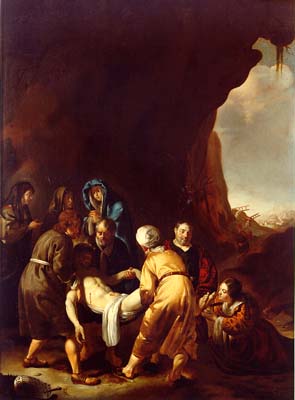THOMAS DE KEYSER SUMMARY |
|
THOMAS DE KEYSER |
| Thomas de Keyser was the second
son of sculptor and architect Hendrik de Keyser. He is believed that he was the student of
Cornelis de Voort in Amsterdam and later the student of both Aert Pietersz and of
Pickenoy. He was married twice, first in 1626 with Machteld Andries, and then in 1640 with Aaltze Heymerick. His influence was enormous on other painters of the Dutch school in the seventeenth century. Rembrandt himself was strongly influenced in his early years by the work of de Keyser. His is best known today for his portraits, however his dramatic scenes like The Entombment of Christ were powerful and quite popular at the time. This work is currently in a private Belgian collection. De Keyser also painted An Anatomy Lesson in 1619, which is now at the Museum of Amsterdam. This painting was greatly admired by Rembrandt and was studied prior to Rembrandt’s work, The Anatomy Lesson of Doctor Tulp, (AR-151). Many works of de Keyser were wrongly attributed to Rembrandt, however modern scholarship has correctly reattributed many of these works to their rightful master. However, we should not attribute too much importance to this coincidence, his titles being quite current at the time. Among all of his portraits, Huygens and his clerk, 1627 stand out as the quiescence of the de Keyser portrait. This portrait of Huygens is now in London. Hugens was also a patron of Rembrandt and Lievens during their early years. The work of de Keyser produced a solemn yet nevertheless lively painting which was typical of Dutch humanism. De Keyser was one of the most appreciated portrait painters of his time. However, it is only during the last few decades that the modern critics have rediscovered him. His severe sumptuousness in his colour pallet, his sense of space and of light, which make Frans Hals and Rembrandt definitely not the only worthy masters in seventeenth century Dutch painting. |
